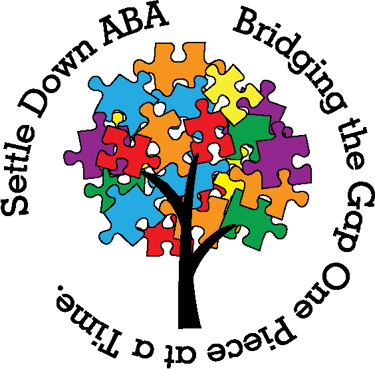

Applied Behavior Analysis (ABA) is a therapy based on the science of learning behavior. ABA therapy applies how our understanding of behavior is applied to real life situations. Behavior analysis helps us understand:
How behavior works
How behavior is affected by the environment
How learning takes place
The methods of ABA have been used and studied for decades. ABA therapy works by:
Adapting the needs to each individual.
Teaches skills that are useful in everyday life.
Can involve one on one or in a group setting
ABA has become widely accepted among healthcare professionals and used in many schools and treatment clinics. ABA encourages positive behaviors and discourages negative behaviors to improve a variety of skills. The child’s progress is tracked and measured.
There are varied methodologies and types of ABA. Listed here are some examples and others that may not be listed specifically:
Discrete Trial Training (DTT)
DTT is a style of teaching that uses a series of trials to teach each step of a desired behavior or response. Lessons are broken down into their simplest parts, and positive reinforcement is used to reward correct answers and behaviors. Incorrect answers are ignored.
Early Intensive Behavioral Intervention (EIBI)
This is a type of ABA for very young children with ASD, usually younger than 5 and often younger than 3. EIBI uses a highly structured teaching approach to build positive behaviors (such as social communication) and reduce unwanted behaviors (such as tantrums, aggression, and self-injury). EIBI takes place in a one-on-one adult-to-child environment under the supervision of a trained professional.
Early Start Denver Model (ESDM)
This is a type of ABA for children with ASD between the ages of 12-48 months. Through ESDM, parents and therapists use play and joint activities to help children advance their social, language, and cognitive skills.
Pivotal Response Training (PRT)
PRT aims to increase a child’s motivation to learn, monitor their own behavior, and initiate communication with others. Positive changes in these behaviors are believed to have widespread effects on other behaviors.
Verbal Behavior Intervention (VBI)
VBI is a type of ABA that focuses on teaching verbal skills.
Along with ABA there are other forms of therapies that can be part of a complete treatment program for a child with ASD some of the examples of these are listed below, our belief is that we are a part of a team and collaboration amongst all your healthcare providers is essential to a positive outcome. Referral to other specialist and coordination with and through your primary care physician is our belief:
Assistive Technology
Assistive technology, including devices such as communication boards and electronic tablets, can help people with ASD communicate and interact with others. For example, the Picture Exchange Communication System (PECS) uses picture symbols to teach communication skills. The person is taught to use picture symbols to ask and answer questions and have a conversation. Other individuals may use a tablet as a speech-generating or communication device.
Social Skills Training
Social skills training teaches children the skills they need to interact with others, including conversation and problem-solving skills.
***All of the information found in this section is for informational purposes and is not meant to provide any medical advice or recommendations.
What is ABA Therapy?

